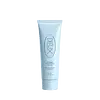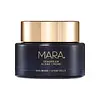What's inside
What's inside
 Key Ingredients
Key Ingredients

 Benefits
Benefits

 Concerns
Concerns

 Ingredients Side-by-side
Ingredients Side-by-side

Water
Skin ConditioningGlycerin
HumectantDimethicone
EmollientDimethicone Crosspolymer
Emulsion StabilisingC12-15 Alkyl Benzoate
AntimicrobialHydroxyethyl Acrylate/Sodium Acryloyldimethyl Taurate Copolymer
Emulsion StabilisingImperata Cylindrica Root Extract
Skin ConditioningCaprylic/Capric Triglyceride
MaskingMethylpropanediol
SolventSqualane
EmollientCetyl Alcohol
EmollientMeadowfoam Estolide
Skin ConditioningDipalmitoyl Hydroxyproline
Skin ConditioningTribehenin
EmollientSodium PCA
HumectantUrea
BufferingCarbomer
Emulsion StabilisingPhenoxyethanol
PreservativeCaprylyl Glycol
EmollientCollagen Amino Acids
MoisturisingPropanediol
SolventHaematococcus Pluvialis Extract
AntioxidantTrehalose
HumectantLinoleic Acid
CleansingPhytosterols
Skin ConditioningPhospholipids
Skin ConditioningPalmitic Acid
EmollientPolysorbate 60
EmulsifyingSorbitan Isostearate
EmulsifyingCeramide Ng
Skin ConditioningHexylene Glycol
EmulsifyingPEG-10 Phytosterol
EmulsifyingPolyquaternium-51
Skin ConditioningTriacetin
AntimicrobialSodium Hyaluronate
HumectantAcrylates/C10-30 Alkyl Acrylate Crosspolymer
Emulsion StabilisingPalmitoyl Hexapeptide-12
Skin ConditioningSodium Hydroxide
BufferingLactic Acid
BufferingWater, Glycerin, Dimethicone, Dimethicone Crosspolymer, C12-15 Alkyl Benzoate, Hydroxyethyl Acrylate/Sodium Acryloyldimethyl Taurate Copolymer, Imperata Cylindrica Root Extract, Caprylic/Capric Triglyceride, Methylpropanediol, Squalane, Cetyl Alcohol, Meadowfoam Estolide, Dipalmitoyl Hydroxyproline, Tribehenin, Sodium PCA, Urea, Carbomer, Phenoxyethanol, Caprylyl Glycol, Collagen Amino Acids, Propanediol, Haematococcus Pluvialis Extract, Trehalose, Linoleic Acid, Phytosterols, Phospholipids, Palmitic Acid, Polysorbate 60, Sorbitan Isostearate, Ceramide Ng, Hexylene Glycol, PEG-10 Phytosterol, Polyquaternium-51, Triacetin, Sodium Hyaluronate, Acrylates/C10-30 Alkyl Acrylate Crosspolymer, Palmitoyl Hexapeptide-12, Sodium Hydroxide, Lactic Acid
Palmaria Palmata Extract
Skin ProtectingWater
Skin ConditioningRicinus Communis Seed Oil
MaskingTheobroma Grandiflorum Seed Butter
Skin ConditioningPentylene Glycol
Skin ConditioningCetearyl Alcohol
EmollientGlycerin
HumectantGlyceryl Stearate
EmollientCetearyl Olivate
Citrullus Lanatus Seed Oil
EmollientMoringa Oleifera Seed Oil
EmollientGlyceryl Caprylate
EmollientSorbitan Olivate
EmulsifyingSqualane
EmollientSodium Gluconate
Skin ConditioningSodium Lactate
BufferingCetyl Hydroxyethylcellulose
Emulsion StabilisingMaris Aqua
HumectantSodium Stearoyl Glutamate
CleansingKappaphycus Alvarezii Extract
Skin ConditioningCaprylic/Capric Triglyceride
MaskingCaprylhydroxamic Acid
Eclipta Prostrata Extract
Skin ConditioningLimnanthes Alba Seed Oil
Skin ConditioningVaccinium Myrtillus Seed Oil
Skin ConditioningOenothera Biennis Oil
EmollientCrambe Abyssinica Seed Oil
Skin ConditioningAdansonia Digitata Seed Oil
EmollientMalus Domestica Fruit Cell Culture Extract
Skin ConditioningVitis Vinifera Seed Oil
EmollientSodium Phytate
Sodium PCA
HumectantLecithin
EmollientBenzoic Acid
MaskingHydrolyzed Pinus Sibirica Seedcake Extract
Skin ConditioningGigartina Stellata Extract
Skin ProtectingChondrus Crispus Extract
Skin ConditioningSodium Nitrate
SoothingXanthan Gum
EmulsifyingCystoseira Tamariscifolia Extract
Skin ConditioningHydrated Silica
AbrasiveAlaria Esculenta Extract
Skin ProtectingSodium Benzoate
MaskingAcanthopanax Senticosus Root Extract
Skin ConditioningDisodium Phosphate
BufferingTocopherol
AntioxidantSilica Dimethyl Silylate
EmollientSodium Phosphate
BufferingPotassium Sorbate
PreservativeSodium Hydroxide
BufferingPalmaria Palmata Extract, Water, Ricinus Communis Seed Oil, Theobroma Grandiflorum Seed Butter, Pentylene Glycol, Cetearyl Alcohol, Glycerin, Glyceryl Stearate, Cetearyl Olivate, Citrullus Lanatus Seed Oil, Moringa Oleifera Seed Oil, Glyceryl Caprylate, Sorbitan Olivate, Squalane, Sodium Gluconate, Sodium Lactate, Cetyl Hydroxyethylcellulose, Maris Aqua, Sodium Stearoyl Glutamate, Kappaphycus Alvarezii Extract, Caprylic/Capric Triglyceride, Caprylhydroxamic Acid, Eclipta Prostrata Extract, Limnanthes Alba Seed Oil, Vaccinium Myrtillus Seed Oil, Oenothera Biennis Oil, Crambe Abyssinica Seed Oil, Adansonia Digitata Seed Oil, Malus Domestica Fruit Cell Culture Extract, Vitis Vinifera Seed Oil, Sodium Phytate, Sodium PCA, Lecithin, Benzoic Acid, Hydrolyzed Pinus Sibirica Seedcake Extract, Gigartina Stellata Extract, Chondrus Crispus Extract, Sodium Nitrate, Xanthan Gum, Cystoseira Tamariscifolia Extract, Hydrated Silica, Alaria Esculenta Extract, Sodium Benzoate, Acanthopanax Senticosus Root Extract, Disodium Phosphate, Tocopherol, Silica Dimethyl Silylate, Sodium Phosphate, Potassium Sorbate, Sodium Hydroxide
 Reviews
Reviews

Ingredients Explained
These ingredients are found in both products.
Ingredients higher up in an ingredient list are typically present in a larger amount.
This ingredient is an emollient, solvent, and texture enhancer. It is considered a skin-softener by helping the skin prevent moisture loss.
It helps thicken a product's formula and makes it easier to spread by dissolving clumping compounds.
Caprylic Triglyceride is made by combining glycerin with coconut oil, forming a clear liquid.
While there is an assumption Caprylic Triglyceride can clog pores due to it being derived from coconut oil, there is no research supporting this.
Learn more about Caprylic/Capric TriglycerideGlycerin is already naturally found in your skin. It helps moisturize and protect your skin.
A study from 2016 found glycerin to be more effective as a humectant than AHAs and hyaluronic acid.
As a humectant, it helps the skin stay hydrated by pulling moisture to your skin. The low molecular weight of glycerin allows it to pull moisture into the deeper layers of your skin.
Hydrated skin improves your skin barrier; Your skin barrier helps protect against irritants and bacteria.
Glycerin has also been found to have antimicrobial and antiviral properties. Due to these properties, glycerin is often used in wound and burn treatments.
In cosmetics, glycerin is usually derived from plants such as soybean or palm. However, it can also be sourced from animals, such as tallow or animal fat.
This ingredient is organic, colorless, odorless, and non-toxic.
Glycerin is the name for this ingredient in American English. British English uses Glycerol/Glycerine.
Learn more about GlycerinSodium Hydroxide is also known as lye or caustic soda. It is used to adjust the pH of products; many ingredients require a specific pH to be effective.
In small amounts, sodium hydroxide is considered safe to use. However, large amounts may cause chemical burns due to its high alkaline.
Your skin has a natural pH and acid mantle. This acid mantle helps prevent harmful bacteria from breaking through. The acid mantle also helps keep your skin hydrated.
"Alkaline" refers to a high pH level. A low pH level would be considered acidic.
Learn more about Sodium HydroxideSodium PCA is the sodium salt of pyroglutamic acid. It is naturally occurring in our skin's natural moisturizing factors where it works to maintain hydration.
The PCA stands for pyrrolidone carboxylic acid, a natural amino acid derivative.
This ingredient has skin conditioning, anti-inflammatory, and humectant properties. Humectants help hydrate your skin by drawing moisture from the air. This helps keep your skin moisturized.
Learn more about Sodium PCASqualane is an emollient that helps the skin hold onto moisture. It's an oily liquid that occurs naturally in certain types of fish and plant oils.
Because squalane boosts hydration in the skin, it also comes with plenty of benefits: it is an antioxidant and can help fight free radicals and skin damage. Squalane is also found to have a detoxifying effect when applied.
Squalane comes from squalene, which occurs naturally within the sebum of our skin. It is one of the oils our skin produces to keep itself hydrated. Squalane is the hydrogenated version of squalene and has a longer shelf life.
Research shows that squalane is non-irritating (even at 100% concentration).
In general, it's a fantastic ingredient. It does a great job at hydrating the skin, and it's suitable for those with sensitive skin.
The source of squalane may impact malassezia / fungal acne. This is because olive oil derived squalane can contain impurities such as fatty acids and plant waxes. Sugarcane derived squalane is recommended for anyone with malassezia concerns.
Is squalane vegan?
This depends on the source. Squalane can be derived from both plants and animals. Most squalane used in skincare comes from plants.
Please note: the source of squalane is only known if disclosed by the brand. We recommend reaching out to the brand if you have any questions about their squalane.
Read more about squalene with an "e".
Is squalane an oil?
Squalane is often called an oil, but it’s technically not; it’s a hydrocarbon, meaning it’s only made of carbon and hydrogen, unlike true oils which are triglycerides made of fatty acids and glycerol.
The term “oil-free” isn’t regulated, so companies can define it however they want. Some exclude all oils, while others just avoid mineral oil or comedogenic oils.
While some people avoid oils thinking they cause breakouts, the right kind of oil (or oil-like ingredient like squalane) can actually help balance and hydrate your skin. It’s worth testing out simple oils or squalane to see what works best for your skin.
Learn more about SqualaneWater. It's the most common cosmetic ingredient of all. You'll usually see it at the top of ingredient lists, meaning that it makes up the largest part of the product.
So why is it so popular? Water most often acts as a solvent - this means that it helps dissolve other ingredients into the formulation.
You'll also recognize water as that liquid we all need to stay alive. If you see this, drink a glass of water. Stay hydrated!
Learn more about Water